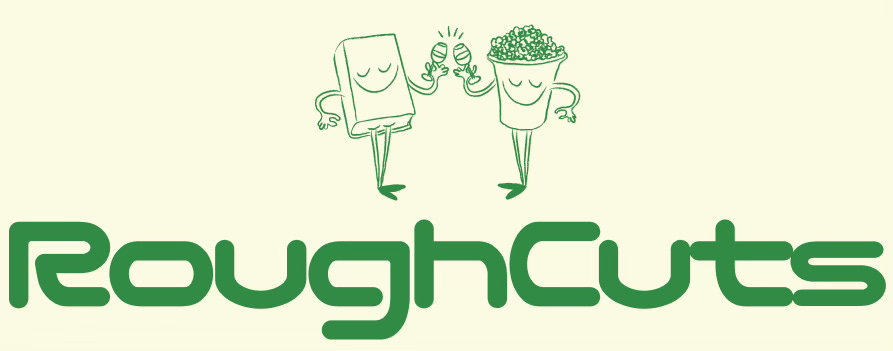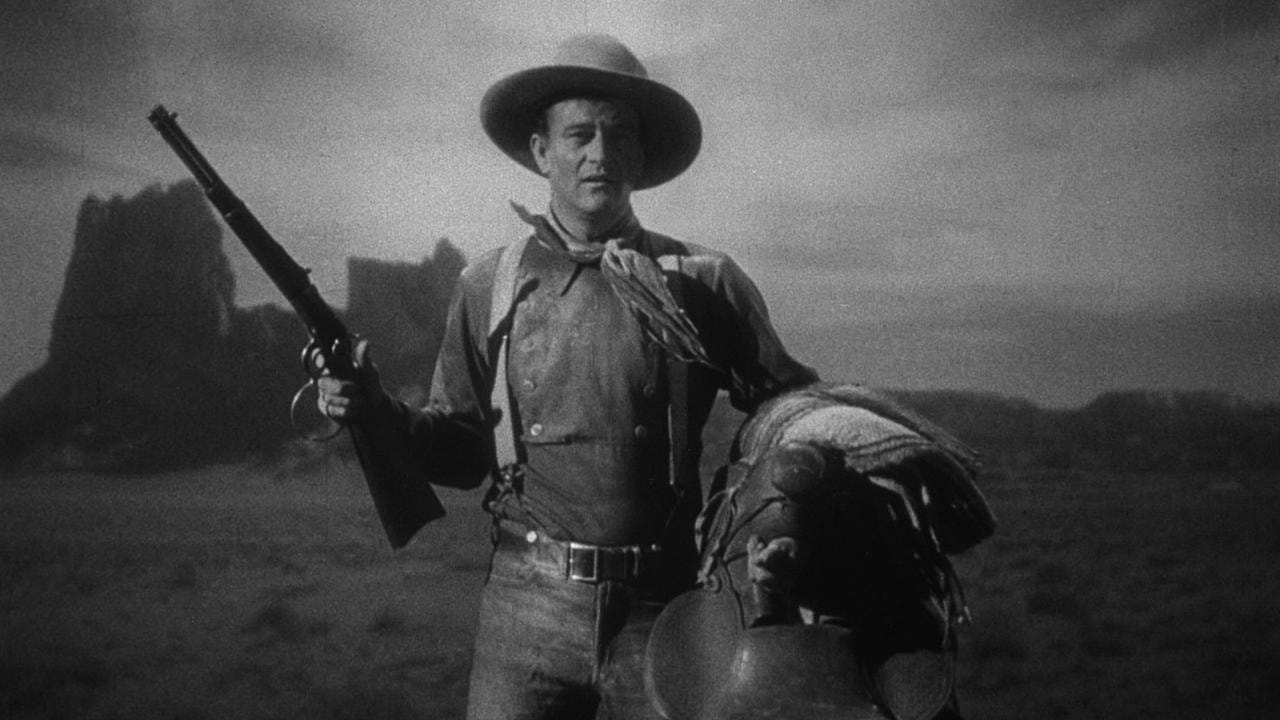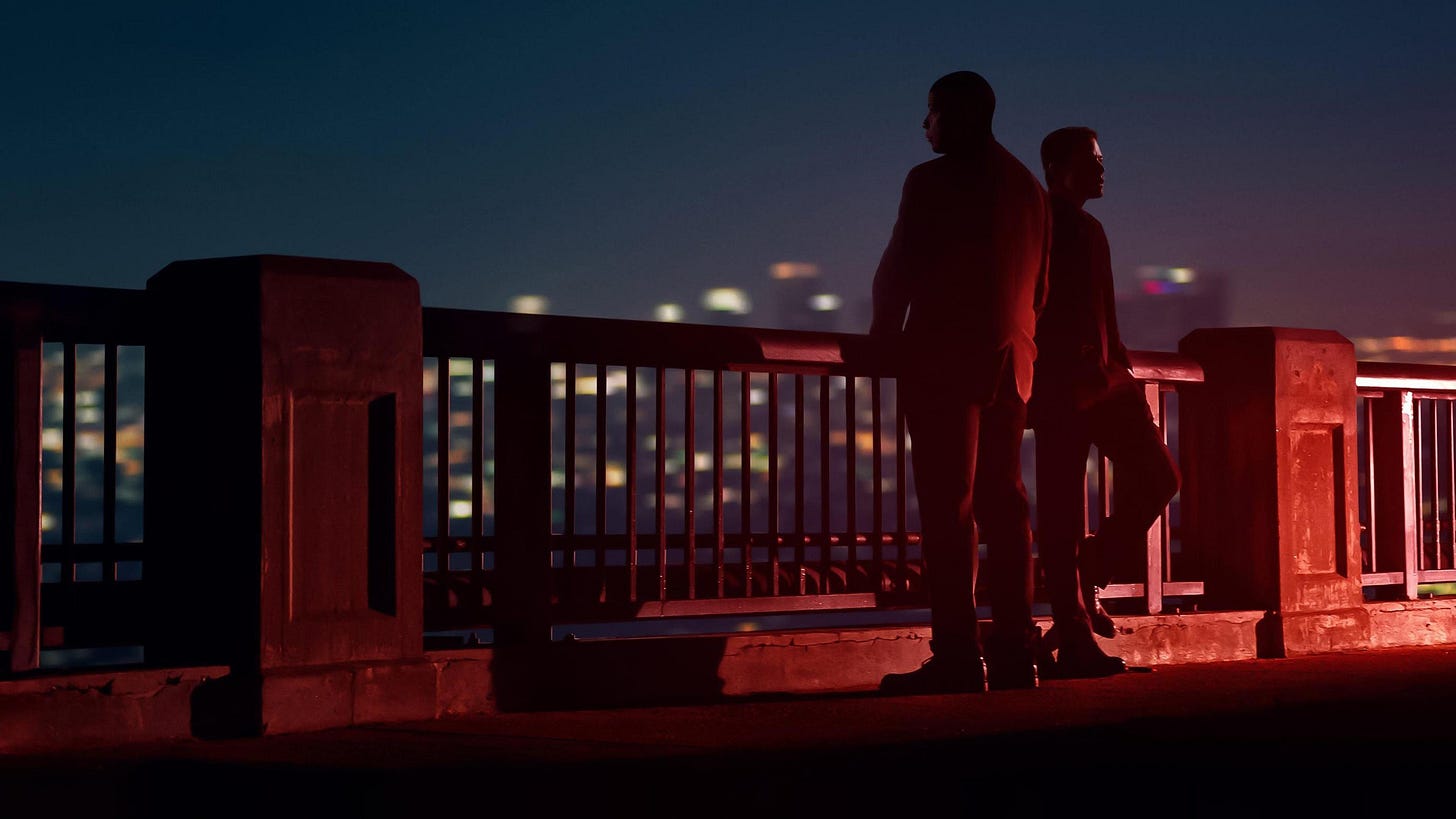How to Make an Original Movie (When Everything’s Been Done)
Cinema's future is buried in its past
The only thing more boring than watching an unoriginal movie is hearing people moan about how there aren’t any original movies anymore. It’s false! There are original movies everywhere if you are willing to find them.
That said, it’s hard to deny that, when it comes to studio filmmaking over the last 15 years, IP-driven, derivative, big-budget pictures have swallowed the markets that were once enjoyed by more diverse fare.
Today, though, we find ourselves at a turning point. Sinners (2024), Ryan Coogler’s original vampire flick, has been a box-office sensation. We can all remember the Barbieheimer summer. Non-superhero movies like Anyone But You (2023), Minecraft (2025), Longlegs (2024), The Substance (2024), and Dune: Part Two (2024) outperformed expectations. Meanwhile, we continue to hear whispers of “superhero fatigue” (although the recent success of Thunderbolts* suggests reports of the genre’s demise may have been exaggerated).
OK, it’s not all sunshine and roses. Far from it. But, as Sean Fennessey said on a recent episode of The Big Picture podcast, there is a growing sense that audiences are clamouring for something new.
So, now is a better time than ever to ask: what does ‘new’ even look like? Hasn’t it all been done? Isn’t everything a remix, anyway?
Well, filmmakers have been wrestling with these questions for generations. As is the way here at Rough Cuts, to find cinema’s future, we must first return to its past.
It’s not easy to follow in the footsteps of greatness. Just ask David Moyes, Emperor Tiberius, or the children of Logan Roy.
How can you do something new when everything has already been done? This is the problem of belatedness.
A belated culture is one paralysed by what came before. Confronted by greatness, the opportunity to do something different becomes vanishingly small. History becomes a straitjacket; inspiration is a dead weight.
Popularised in 2006 by David Bordwell (dubbed the “Aristotle of cinema study,”) belatedness has haunted filmmakers for generations. The titans of the early-to-mid-century - Hitchcock, Ford, Wilder, Lang, Capra, Hawks, et al - were blissfully unconstrained by history, free to innovate and establish the storytelling traditions (themselves borrowed from literature) that still exist to this day.
Then came the ‘60s. Though it was now creaking, the studio era had been so influential, so behemothic, that any aspiring filmmaker couldn’t help but feel smothered by its shadow, not to mention that of the newly minted masters of world cinema, from the Italian neorealists to the auteurs of the French New Wave. The means of production had changed, too. In the studio era, filmmakers could simply join one of the Big Beasts, do their apprenticeship, and work their way up through the factory. No longer. Now, filmmakers had more control than ever.
But what could they do with it? Everywhere they turned, a late ‘60s filmmaker was confronted with capital-G greatness. “Could a beginner create thrillers as audacious as those by Alfred Hitchcock and Lang?” asks Bordwell in The Way Hollywood Tells It (2006).1 “Could any novice make Westerns as powerful as Stagecoach (1939), High Noon (1952), Shane (1953), or Rio Bravo (1959)?”
A penny, then, for the thoughts of the next generation, who picked up the mantle in the '80s and ‘90s. Not only did Cameron, Fincher, Carpenter, Bigelow, and their contemporaries have the weight of the studio system bearing down on their shoulders, but they also had the New Hollywood to deal with as well. “Now your detective movie competed not only with The Big Sleep (1946) but with Chinatown (1974),” writes Bordwell. “Newcomers competed not only with Old Hollywood but with New Hollywood and with New New Hollywood.”
If you’re enjoying Rough Cuts, please consider subscribing (it’s free!) If you’d like to support future posts, you can also buy me a ‘coffee.’ I enjoy writing in coffee shops, so you would quite literally be fuelling my next piece!
Each new generation of filmmakers faced the same task: creating something original. Cinema’s history “presented an awesome challenge to any beginner,” says Bordwell. “Not only had everything apparently been done, but it has been done superbly.”
But here’s the key point. They succeeded. Belatedness wasn’t terminal. You'll find few people complaining about the unoriginality of the New Hollywood, ‘80s horror wave, or ‘90s indie boom. No matter how potent their influences, filmmakers continued to create movies that felt vital and new.
How?
Belatedness remains as thorny a problem as ever. Today, if you’re making a detective movie, you haven’t just got The Big Sleep and Chinatown breathing down your neck, you’ve also got Seven (1995) and Zodiac (2007). If you’re making a Western, you’ve got to deal with Unforgiven (1992) and No Country for Old Men (2007) before you’ve even got to Ford, Hawks, and Leone.
In days gone by, filmmakers could wield a potent weapon against belatedness. Allusionism. “Allusions to old movies are expected in virtually every project,” Bordwell writes in 2006. “Today, the plethora of fan magazines and Internet cultures has bred a pop connoisseurship that demands film references as part of the pleasures of moviegoing.“
From the 1970s onwards, with movies becoming the monoculture’s gravitational force, calling out older films became an effective way of getting into their slipstream. Thus was born a trend of self-aware cinema, one rich with allusions, references, and stylistic flourishes borrowed from past movies. In the glory days, this helped create a sense of cinema being in constant dialogue with its history; a call-and-response chorus that gave the movement a sense of living, breathing dynamism.
Today, though, this strategy is waning. Spoiler: cinema has lost its monocultural power. In 1982, Noël Carroll could validly describe it as our “common cultural heritage.” This is no longer true, and no amount of Letterboxd subscriptions, 4K Blu-Ray sales, or nostalgic rep-screenings of Sorcerer (1977) will change that.
In this environment, allusionism risks becoming a weakness, not a strength, a winking nod to the shrinking group of people aware of the reference. Rather than making movies feel alive, allusionism leaves them feeling like niche offerings designed for a movie-brained subculture, one that, for all its passion and insider thrills, is ultimately self-obsessed, nostalgic, and divorced from the culture writ large.
So, allusionism alone won’t cut it. Thankfully, history holds other anti-belatedness missiles in its armoury…
It’s always an option to simply nestle yourself comfortably within the favoured storytelling tradition of the day. Call this the Path of the Journeyman. This is less a response to belatedness than a submission to it.
There is nothing wrong with this, especially when the tradition is strong. I’d quite happily spend a few days gorging on the ‘Die Hard on a…’ canon. Dozens of movies inspired by Easy Rider (1969), Pulp Fiction (1994), Jaws (1975), Star Wars (1977), Taxi Driver (1976), Goodfellas (1990), and Apocalypse Now (1979) still pack a punch. The 2000s run of Judd Apatow & Adam McKay-inspired comedies remained fresh and belly-tickling, as did the Nancy Meyers & Nora Ephron rom-com wave in the ‘90s.
Until they didn’t. Here lies the problem with this approach. However good the source texts are, audience saturation will set in eventually. Besides, if the traditions of choice are dormant, simply getting them out of the fridge and reheating them will lead to a bland meal: just look at the failure of The Amateur (2025) or The Little Things (2021) (strangely, both Rami Malek pictures), whose attempts to resurrect the paranoid espionage and detective thrillers of the ‘70s and ‘90s felt flat and derivative.
If we want to build a new movement, simply continuing existing ones isn’t going to fly either. We’re gonna have to get more ambitious…
Few would accuse Brian De Palma of a lack of ambition. His approach to filmmaking reveals the next weapon in our armoury: using the asymmetric advantages of our era to take on the masters at their own game.
So, what are these asymmetric advantages? In De Palma’s case, it was loosening social mores. He took the eroticism and voyeurism bubbling under the surface of Hitchcock’s thrillers and ramped it up to its lurid, sordid extreme.
Today, though, eye-poking extremity has lost its novelty factor. More interesting are modernising social norms around issues such as race, gender, and sexuality, which unlock new storytelling opportunities within familiar sandboxes. Last year, for example, saw the release of Vera Drew’s The People’s Joker and Jane Schoenbrun’s I Saw the TV Glow, both of which took familiar genres (superhero movies and psychological horror), but reshaped them into personal meditations on the trans experience.2 These are movies that ‘couldn’t’ have been made in eras past, and that could well prove canonical texts moving forward.
This approach - parking socially conscious tanks on the masters’ turf - is one where allusionism still has a role to play. Last year, A Different Man, Anora, Rebel Ridge, and The Substance all were firmly in conversation with specific older films (The Elephant Man (1980), Pretty Woman (1990), First Blood (1982) & The Fly (1986)), and, to varying degrees of success, used the iconography of their influences to explore modern preoccupations around identity, sex-work, institutional violence, and gender.
Social liberalisation isn’t the only asymmetric advantage we hold over our ancestors. If the brain isn’t sufficient, we can always resort to brawn. Consider this the ‘roided-up bodybuilder approach to fighting belatedness: using technology to jack things up until the competition is blown out of the water. “Although critics tend to dismiss special effects, the best are triumphs of human ingenuity,” says Bordwell."Post-1970 film-makers made them powerful additions to the tool kit of representational art.” What hope, after all, did the monster features of days gone by have against the sheer awe of Jurassic Park’s T Rex?
We all know what this looks like when it goes wrong. Much ink has been spilt about declining CGI quality and washed-out green-screen backgrounds. More interesting, though, is how some of the most visceral, practical-effect-driven movies of the last few years - Fury Road (2015), Top: Gun Maverick (2022), and even Killers of the Flower Moon (2023) - have incorporated invisible CGI effects for last-mile improvements and to supplement the practical work at the center of the film.3 Fashionable as it is to hate on CGI, this blending of traditional technique and modern abilities is exactly what turbocharged the great spectacles of eras past. It is worthy of the same respect as Spielberg, Lucas, and Cameron’s groundbreaking work in the late 20th century.
Technology alone isn’t sufficient, though. First, you need to have a damn good story. Which leads us to our next anti-belatedness weapon…

An irony buried in the ‘originality’ question is that the true meaning of “we want more original movies” is often just, “we want older stuff, updated.”
There’s nothing wrong with this! Rehabilitating unpopular genres is how filmmakers of previous eras managed to remain fresh and exciting, hence the rise of horror, gangster, and science fiction, genres largely unfavoured in the studio era (at least compared to Westerns, musicals, and melodramas). “By promoting genres that had been at the bottom of the 1950s hierarchy,” says Bordwell, “a new generation could display its talents.”
On this measure, there have been multiple promising developments in recent years. Ti West’s X franchise and this year’s remarkably successful Final Destination Bloodlines have signalled a return to good old-fashioned, non-elevated horror (i.e., where the bad guy is the person with the machete, not the protagonist’s trauma). We’ve seen court-room dramas (Anatomy of Fall (2023), Juror #2 (2024)), silent movies (Hundreds of Beavers (2024), Flow (2024)), romcoms (Anyone But You (2023), No Hard Feelings (2023), the forthcoming The Materialists), and even classical murder mysteries (Rian Johnson’s Knives Out franchise) all be updated for modern sensibilities.
What other genres of yesterday are ripe to be dusted off today? This could be its own essay, but large ensemble comedies, historical epics, hand-drawn animation, and sword-and-sandals flicks all could do with a fresh lick of paint.
An important caveat. Simply re-upping old genres isn’t sufficient (see the aforementioned The Little Things and The Amateur, hereby known as the ‘Malek Trap.’). The masters of old were able to update these old genres, whether through technological juice, auteurist sensibility, or a finger on the cultural pulse. There are few better examples of this than Sinners, which smashed together a vampire movie and a non-jukebox musical (two genres that haven’t been huge in recent years) to unmistakably become its own beast.
Another way of updating an old genre is to blend it with our modern technological anxieties. It is time to retire the ‘phones make drama difficult’ excuse. In Decision to Leave (2023), Park Chan-Wook blended a traditional romantic-noir romance with digital touches like GPS data and a translation app. Drop (2025) uses unsolicited AirDrops to craft a Hitchcockian thriller. Stephen Soderbergh’s Kimi (2022) did something similar with an Alexa-like technology. Yes, this may sometimes result in movies feeling eye-rolling and awkward, but that’s a cost worth paying to create a movement that wrestles with the present rather than taking comfort in the past.
If you don’t want to revive a genre or play in its sandbox, there’s always another option. You could try to kill it entirely.

The ‘poison pill’ movie is difficult to get right. Bordwell notes that it is exceedingly rare, citing Robert Altman as one of its few masters: “It’s as if Altman seeks to so discredit each genre that no one will ever be able to make a war film, a whodunit, or a cowboy movie again.”
This is the nuclear option. If you are sick of a genre, you can try to explode it from the inside, as Clint Eastwood’s Unforgiven did to the Western, and Walk Hard: The Dewey Cox Story (2007) did to the music biopic (although the latter has remained stubbornly persistent). Scorsese even did it to himself with The Irishman (2019) - after such a sombre, thorough deconstruction of the iconography of the gangster, what more is there left to say?
When they work, these movies can represent a capstone on a dying tradition, helping clear the ground for something new. See, for example, Austin Powers, whose deconstruction of the Bond mythos was so comprehensive that it contributed to a complete reimagination of the franchise in the Craig era.
Has this been done for superhero movies? Not conclusively. There have been attempts, like Kickass (2010), the Deadpool movies, and the TV show The Boys, but these inevitably end up trying to have their cake and eat it: telling us through wry narration that the genre is silly while serving up standard superhero narratives. Would an Unforgiven or Irishman even be possible for the superhero genre? My instinct says no, but I’d love to be proven wrong.
You may have noticed something. None of these ideas are truly “original.” After all, what is? The wheel can remain invented; the canon can remain intact.
For all the Sturm und Drang about the death of movies, we’re at an exciting turning point. Don’t lose hope. Hold the line. Keep going to the cinema to see new stuff; keep singing the praises of new films you admire. Onwards!
These posts take time. I want to keep them free for now, but if you've enjoyed my work and would like to support it, please consider buying me a 'coffee.'
Unless otherwise noted, all quotes are from The Way Hollywood Tells It (2006) by David Bordwell.










Love this, Ed. If you'll indulge a screenwriter's musing: for me, the only way I’ve ever brushed up against something that felt remotely original was to begin not with genre, but with some quiet personal dread or unanswered question that keeps me awake - something I don't hear others addressing, but suspect many are feeling - and then find a genre to serve as a vehicle for exploring that. Starting with genre, as many do, often leads to generic or derivative work.
I think you underestimate just how many nostalgic rep-screenings of Sorcerer we can get out the door.
Fr though, this is tremendous, Ed. To your point about asymmetric advantages, I'm curious what, if anything, you foresee as the defining development of the next era that filmmakers could play upon. Personally, I've got my money on mysticism and spiritual awakening.